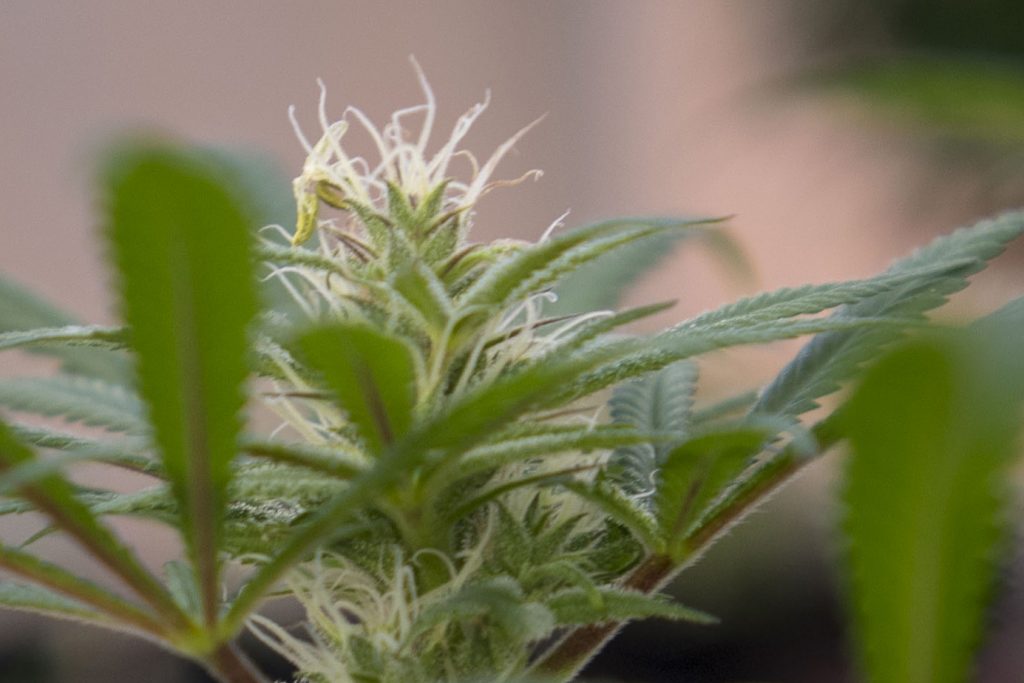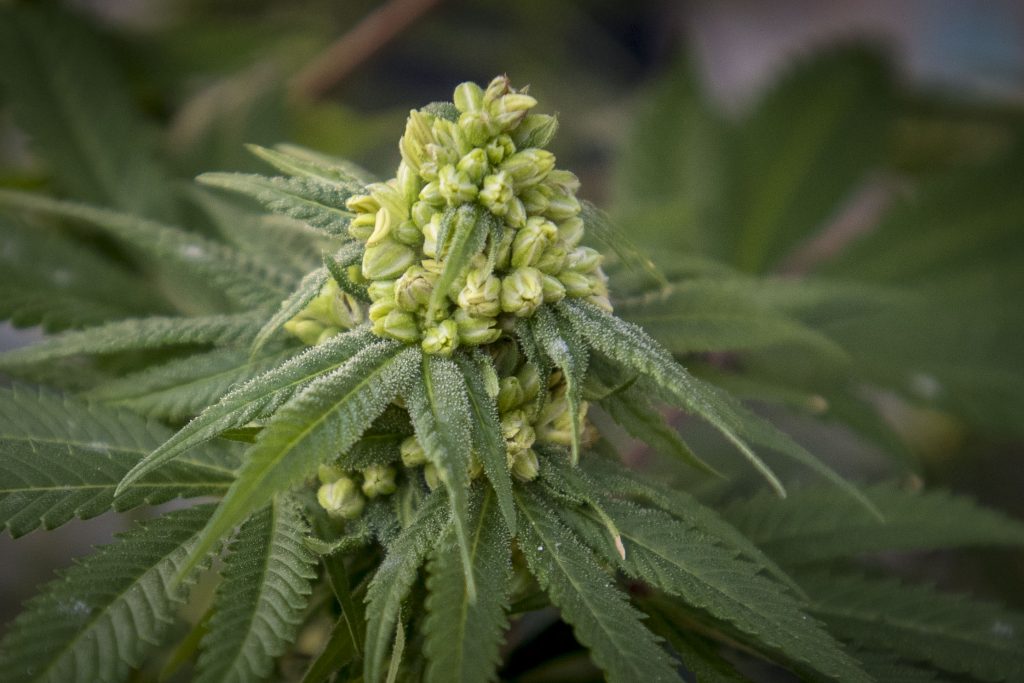A UConn plant science professor working with hemp plants has developed a way to maximize the production of female flowers, which produce significantly higher quantities of cannabinoids than male flowers.
Cannabis sativa (commonly called hemp) is continuing to make news, as the therapeutic importance of compounds produced by the plant are recognized by the medical community. The compounds, collectively called cannabinoids, encompass hundreds of distinct molecules, the most familiar of which are cannabidiol (CBD) and tetrahydrocannabidol (THC).
As therapeutic applications become more common and commercialization continues to spread, there’s a need to ramp up cultivation of the hemp plant. Associate professor Jessica Lubell of UConn’s plant science department is working to help growers meet the increasing demand.
“There’s a lot of potential for hemp to help a lot of people,” she says. “Our refined, feminized seed production technique can benefit growers, and facilitate research into breeding and new strain development.”
Hemp plants, like humans, carry sex chromosomes, where offspring will inherit one chromosome from each parent. For simplicity, XX yields a female plant, XY yields a male.


“Hemp plants that produce male flowers are separate from plants that produce female flowers,” Lubell explains. “But with hemp, sex expression may not be as straight forward as X and Y.”
In cultivation of hemp for medical purposes, the female flowers are sought after because they produce significantly higher quantities of cannabinoids than male flowers. In production, the presence of even one male plant in a growing facility, or a little stray pollen, can cause female plant flower buds to produce seed, significantly reducing the hemp medicinal product. In addition, the seed that is produced is a mixed bag of males and females, and if used for production will require the removal of male plants and a lot of extra labor and lost production.
With hemp, however, certain treatments can induce female plants to develop male flowers and vice versa. Having a way to produce only female seed regardless of the sex of the plant would save growers and breeders resources, as well as time that would otherwise be spent sorting through plants and harvesting only the valuable females.
That was the starting point for Lubell’s current research. She says methods for changing the sex of flowers have been described in the past, and are talked about on hobbyist grower forums online, but they aren’t practical for commercial-scale production.
The process starts with a female plant, which is induced to produce male flowers. Male flowers create pollen, which is essentially plant sperm that can fertilize eggs in female flowers. If the flowers on a female plant are induced to form male flowers, a process called masculinization, the resulting pollen will contain only X chromosomes. The masculinized flowers will still be genetically female, while appearing and functioning as male flowers. When the all-X-chromosome pollen crosses with eggs from female plants, the resulting seeds will all be XX – in theory, 100 percent female.
Lubell set out to prove that the process worked scientifically and then attempt to scale it up so it could be used by commercial growers. She chose three CBD hemp strains and one industrial hemp strain, all containing less than 0.3 percent THC, to experiment with.
The chemical used to masculinize the female flowers is called silver thiosulfate, or STS, and it was applied at different strengths at intervals throughout the flowering period. The results of Lubell’s research will be published in the December issue of the scientific journal HortTechnology.
The conversion to male flowers was most successful with the highest concentration of STS, and the rate of conversion varied from 95 to 100 percent for all hemp varieties tested. The pollen produced from the masculinized flowers went on to produce good, all-female seed, though the pollen output by the masculinized flowers was reduced in comparison to pollen from genetically male flowers, Lubell and her co-authors note.
Lubell says the genetic diversity of various hemp phenotypes can affect the efficiency of the STS in masculinizing the flowers, but overall, the procedure is effective, safe, and easily scalable.
Her future research plans involve improving controlled environment cultivation of hemp, and breeding better CBD hemp strains. In addition, she is interested in optimizing tissue culture micropropagation for maintaining maternal lines to help producers efficiently maintain their collections of strains.



